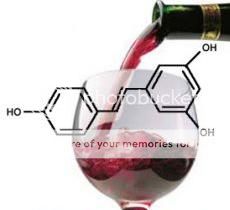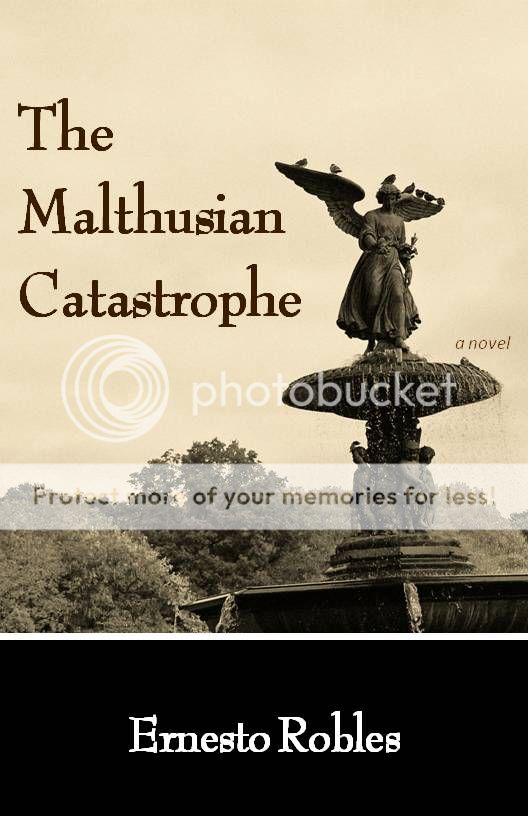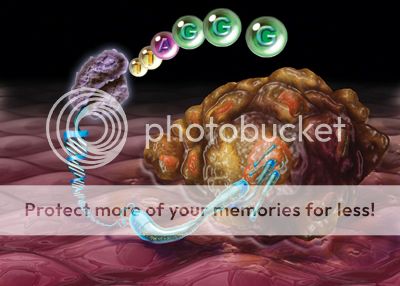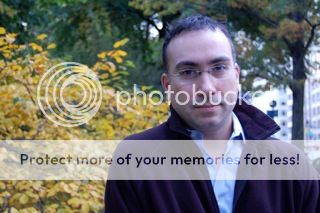Forever Young: Living in an Age of Agelessness
Jan1

The chemical compound resveratrol, a component of red wine that has been linked to anti-aging properties in laboratory experiments.
During a recent trip to New York City, I had the pleasure of befriending exciting new author Ernesto Robles, whose debut novel The Malthusian Catastrophe is a ScriptPhD.com recommended pick. Smart, topical, fast-paced and decidedly engrossing, this biomedical thriller drives at the roots of our cultural obsession with the “fountain of youth” and the perilous socioeconomic repercussions of actually finding and disseminating it. In a year when the Nobel Prize for Medicine and Physiology went to a team of researchers for their discovery of how chromosomes are protected by telomeres and the enzyme telomerase, essential biological components of the human aging machinery, and a cultural era that has anointed juvenescence as sacrosanct, Malthusian’s overarching themes are especially germane. ScriptPhD.com’s discussion includes a review of the book, the biology and ethics of current aging research, and a one-on-one interview with Mr. Robles. For full content, please click “continue reading.”
A Malthusian catastrophe, originally postulated by the 18th Century economist Thomas Malthus, proposes that “the power of population is indefinitely greater than the power in the earth to produce subsistence for man. Population, when unchecked, increases in a geometrical ratio.” That is, when a population grows beyond sustainable levels, it will force a return to primitive, subsistence-based living. Highly influential on Charles Darwin’s Natural Selection work, the theory has caused a divergence of opinions on applicability to modern-day conditions. A recent New York Times Science piece argued that post-Industrial Age conditions and improvements to the food supply chain had rendered the theory obsolete, while the Wall Street Journal counterargued that high global living standards (a car for every household, for example) would create deleterious, and eventually catastrophic, economic and environmental crises. Such is the backdrop against which the events of The Malthusian Catastrophe take place.

The Malthusian Catstrophe, ©2009 Loyal Dog Publishing, all rights reserved
Michael Jeffs is a bright, ambitious former Wall Street broker caught in the web of steadily rising unemployment and economic strife. Desperate for a job, he goes on a last-ditch interview at the mysterious but quickly growing company Aseso Neutraceuticals, sellers of Sinsen, an herbal supplement that is believed to arrest, if not reverse, aging. Headed by passionate brilliant Stanford scientist David Oaks and reclusive Japanese businessman Toshiro Tanaka, Aseso is on the cusp of a global craze. Michael doesn’t know much, but he knows he needs a job, so he accepts Aseso’s offer to run their business strategy and moves to New York City with his compassionate artist girlfriend, Caroline. A fancy apartment, money in the bank, and being a part of “the fountain of youth”—it all seems too good to be true.
With Michael’s help, it doesn’t take long for Aseso to take off. Public acess to Sinsen becomes difficult for all but the richest and most well-connected, a situation that is only exacerbated when scientific studies reveal that Sinsen’s two market rivals, Carotegen and Reversetrol, do not possess anti-aging properties, while Sinsen does. This shocking revelation is based on a scientific deception so grand, that it has far-reaching consequences for Aseso, Michael, and the entire globe. Aseso’s rising fortunes perfectly mirror the spiraling penury and abject living conditions of New York City and the rest of the world, scenes of which represent some of Mr. Robles’s strongest writing throughout the book. Sinsen becomes more than just an anti-aging pill; it bestows political capital, economic force, and ultimately, total domination. All valuable land resources, manpower, government coups, and even acts of terrorism are perpetrated towards production and acquisition of Sinsen. Unfortunately, public zeal and corporate greed are thwarted and toppled by the greatest scientific property of them all—shocking unpredictability.
With a crisp, approachable writing style, Mr. Robles crafts together a stylish novel whose gripping plot points are far outweighed by the modern-day dilemmas they weave together. In the form of character archetypes, he is asking us, the reader, to make a choice about life extension. While Michael Jeffs succumbs to the inertia of a populist tidal force both in taking Sinsen and aggressively marketing it (despite the meek protests of his inner doubts), his girlfriend Caroline is a stalwart moralist who adamantly opposes what she feels is a social experiment gone awry, her graying hair a physiological manifestation of both her indignation and their fraying relationship. In the middle is Dr. Joanna Hochberg, ever the hypocrite, vociferously impugning Sisen use by the general population even as she’s taking it on the side. There is the idea of corporate greed in the dawning of an age where medical and biotechnology advancement represents the future of power, an inequity manifesting itself in the third world before our eyes. In Mr. Robles’s hands, first world citizens are those that can take Sinsen irrespective of geography, and thereby outlive and outlast, and the third world is comprised of those that can’t—with no in-between. Furthermore, the book delves into the price of chasing immortality with unproven, theoretical remedies. [The United States market for supplements (herbal, food and drug)—which are exempt from FDA regulation—exceeded $25 billion in 2008.] Some people, due to a cruel, unexpected twist of biology, even paid the ultimate price.
Finally, and most importantly, is the paramount question of ethics and sustainability. Should we live forever? Can we? The Malthusian Catastrophe closes by invoking a very famous, oft-repeated psychological experiment by John B. Calhoun that tested the limits of population density and sustainability. Building the foundation for a generation of scientists, Calhoun hypothesized that there exists an innate upper limit to the number of meaningful social interactions that an individual could cope with before stress became a factor. In a habitat that could uncomfortably house 5,000 rats, the population always leveled off at 150, and never exceeded 200, incurring extreme behavior including exclusive homosexuality, high (>96%) infant mortality rates, psychological withdrawal, and male hyperaggression. The experiment was named as one of 40 Studies That Changed Psychology, and Calhoun’s rats have come to serve as a model for urban crowding and decay, civil unrest (including the Watts and Newark 60s riots), and sustainable population growth models. All of this begs the question of whether it’s ethical to fight the natural biology of aging and generational turnover, or whether technological advancement represents a quantum leap in human evolution and survival of the fittest. Professor Peter Singer, an Australian philosopher and Professor of Bioethics at Princeton University, has engendered enormous controversy for his claims that animals deserve to be treated like humans, and his pro-euthanasia stances. In the early 90s, Dr. Singer argued against radical life extension and the production of an anti-aging pill as developing the drug would fail to achieve the greatest sum of happiness over time. On the opposite side of the bioethical spectrum is another Aussie, Dr. Russell Blackford, Professor of philosophy and bioethics at Monash University. His recent piece in the “Institute For Ethics and Emerging Technologies” blog offers a diametrical proposal: that such a pill will be produced anyway and, all other factors being equal, as long as the expanded lives end well, they are morally acceptable.
The aforementioned concepts were beautifully assembled in a recent TED Talk by UCLA Professor and scientist Jared Diamond, author of Guns, Germs and Steel: The Fates of Human Societies and Collapse: How Societies Choose to Fail or Succeed. Please ignore the awful combover—he’s really a very smart man!
The Biology of Aging: Source for a Cure?

Conceptualization of telomeres, the "protective caps" at the ends of our chromosomes.
Embedded within The Malthusian Catastrophe is some fairly sophisticated and cleverly-researched biology. The supplement sinsen is derived from the root of the actual Chinese Astragalus plant, and acts as an activator of telomerase, an enzyme that plays a key function in protecting telomeres and has been implicated in the canon of anti-aging research and drug development. Let’s first back up and talk about what telomeres are and why they’re so critical. The 2009 Nobel Prize in Medicine was awarded to three American researchers, Drs. Jack Szostak, Carol Greider and Elizabeth Blackburn, for discovery of and contributions to the field of telomere research. The DNA that codes your genes (what makes you you) goes through a series of complex folding and packaging steps to condense its volume, protect the DNA, and allow for simpler replication of genetic material during cell division, an ever-ongoing process during our lives. Long strings of DNA are first scrunched together like a wad of paper in structures called “nucleosomes”, then combine with and around proteins called histones to form “beads-on-a-string” (sort of like a necklace with a bunch of charms on it), then into dense ordered fibers, and finally into the familiar compact X-shape by which we can identify chromosomes. At the very tips of these structures are ordered, noncoding, repetitive sequences of DNA that act as “caps” to the chromosome (see picture). These are called telomeres. Blackburn has compared these ends to the protective anglets at the ends of shoelaces. When a cell divides, this folding process reverses itself and DNA unwinds to copy for the new cell. In order to protect the more important parts of your DNA (those that actually code for proteins), the replication process “snips” the very ends—the telomeres. Eventually, over the course of enough cell divisions, the telomere frays to a dangerously short length, endangering these important regions of DNA. Scientists can tell how old a cell is based on its telomere length, akin to the rings of a tree trunk. Telomeres have thus been implicated in human aging, cancer, and many of the so-called “aging diseases”.

Telomerase (pictured here as a grey blob) adding specific DNA ends to telomeres, thereby lengthening them, before chromosmal packaging into cells.
Luckily for us, biology has devised a very clever, evolutionarily conserved mechanism for decelerating chromosomal shortening in the form of telomerase, an enzyme that elongates telomeres by adding a specific DNA sequence common to all vertebrate animals (TTAGGG). Activation of this enzyme is considered the Holy Grail of anti-aging research. Interestingly, research has shown that socioeconomic status correlates to telomere length, with poorer people exhibiting shorter telomeres than the rich. New York City based TA Sciences is attempting to invent itself as the real-life Aseso Neutraceuticals, marketing a pill called TA-65, an extract of the same herb in the book, Astragalus, a plant has been used for centuries by Chinese herbalists for medicinal purposes. TA Sciences concentrates a low-level extract in the form of TA-65, which they propose is a telomerase activator. Recent media attention has included Newsweek and the Los Angeles Times. (Los Angeles? Interested in eternal youth? Color me stunned!) But before you rush to the TA Sciences website to put in your order for this super-supplement, be aware that several challenges currently face telomere research, including lack of an appropriate animal testing model, evidence that telomere lengthening may increase cancer cell proliferation, and of course, the risk of taking an unknown substance that has not been approved by the FDA.
One thing you can do fearlessly, and often, is drink red wine. The grapevine produces one of the highest naturally occurring concentrations of resveratrol in the skin of the grape of any food or herb. What is resveratrol and why is it a key to aging and disease? Numerous consensus studies of late (a nice collection can be found here) have found that calorie restriction diets in mice, rats, and other animals drastically expand their life spans. One important biochemical pathway activated by these low-calorie diets are the enzyme family of sirtuins. Sirtuins regulate key components of metabolism, cell defense and reproduction, and one of the most powerful sirtuin activators is… you guessed it! Resveratrol. Indeed, a landmark 2006 study found that the physiology of obese mice whose high fat diet was supplemented by resveratrol mirrored that of a healthy mouse and significantly extended their lives compared to placebo groups. Naturally, the market and demand for resveratrol nutritional supplements sprouted virtually overnight, with production coming from both chemical synthesis and extraction from Japanese knotweed. To date, benefits to humans of resveratrol supplements are unproven and the collective field of anti-aging research has advanced modestly. Resveratrol can also be found in blueberries, peanuts, and various other plants. But here at ScriptPhD.com, we think red wine is the best solution. Salud!
We are clearly on the cusp of grasping the futuristic science imagined by Mr. Robles. Research will undoubtedly unlock the biological keys of aging, disease, and the pharmaceutical industry will likely follow suit with a panacea of one sort or another. It is not inconceivable that within our lifetimes, we will be offered the same choice as the characters of The Malthusian Catastrophe. Age naturally, or defy Mother Nature? Which will you choose?
Interview with The Malthusian Catastrophe author Ernesto Robles:

Ernesto Robles, image courtesy of author.
ScriptPhD.com: Your background professionally spans economics and business, and yet the book that you wrote is in essence a biomedical thriller. What prompted your interest in science as a backdrop for your first novel?
I started off wanting to write an economic oriented non-fiction book catered to people who do not know much about economics. After a bit of research, I concluded that many in my target audience would prefer to learn something if it were embedded within an entertaining story. Also, I find it helpful to extend a scenario to its logical extreme to better illustrate a point. Economics is basically the study of the behavioral interaction between those that demand and those that supply. To that end, I decided to write a novel about something many people would demand (extended life) and those that supply (profit motivated companies). When I started researching the science of aging, I came across many scientists doing serious research on the subject. I decided to base the science in the book on one particular scientist Dr. Elizabeth Blackburn, UCSF. Coincidently she won the Nobel Prize in Medicine this past October, one month before the book was published.
Science has the potential to make linear trends go, all of a sudden, parabolic… but then again so does human behavior… which makes for an interesting story.
SPhD: One of the ways that Aseso Neutraceuticals is able to execute the (unnamed) Grand Deception that sets off the key chain of events is through marketing Sinsen as a supplement, not a drug, thereby absolving it of the FDA regulatory oversight that all other drugs are subject to. Is this book at all a commentary on the hundreds, if not thousands, of nutritional supplements being consumed without any clear knowledge of effects or safety, and would you support FDA approval of nutritional supplements?
ER: To answer the question I should shed light on the situation. Right now the responsibility of the safety of a new supplement rests with the manufacturer and only after the product hits the market, and is presumably consumed by people, does the FDA assume some responsibility. I say “some” because the FDA is responsible for the safety of the product; which is to say that it is responsible for the product not causing you any harm; but it certainly does not opine on the efficacy of the product. Having each supplement pulled from the market to undergo clinical trials seems a bit impractical. People should do their own research and consult with their primary doctor. This situation is like going to church. The structural engineer of the municipality that certified the church as “safe” did not make any claims about the efficacy of that church towards entry to heaven. As long as people truly understand the analogy the current practice seems the most practical given the limited resources available to the FDA.
The commentary in the book was more to say that the FDA like many governmental agencies is a political institution where some of the actions only seem logical from a political perspective. Much of what is studied and approved at the FDA is driven by pharmaceutical companies wanting to bring a new drug to market. If a disease has not yet been classified, that would either be prevented or cured by this hypothetical new drug, then the FDA just might classify a new disease solely to have the new drug approved. I am not saying this is the right or wrong way to do things, I just think people should be aware of how things in Washington DC get done. If someone is trying to sell a solution it helps that a problem exists.
SPhD: Before the climactic revelation that is the novel’s denouement, Sinsen engenders a very strong two-sided debate. There are those that feel it’s a miracle pill and that everyone should revel in its anti-aging benefits (such as the novel’s protagonist Michael Jeffs), and there are those who feel it’s messing with God or Mother Nature, and that people should age naturally as the order of the universe dictates (such as Michael’s girlfriend Caroline). When all is said and done, what side of the debate do you fall on? Would you take Sinsen?
ER: I would probably fall on the side of a third character, Dr. Joanna Hochberg. I am a selfish person like anyone else (perhaps more so) so it would be hard for me to resist taking Sinsen however the moral intellectual inside of me (if there is one…a big if) would have to admit to the obvious social consequences that would result. I am a huge carnivore. If the US outlawed meat I might be tempted to follow my roots back to Mexico. If we lived in the world of The Malthusian Catastrophe and the US outlawed Sinsen you can bet my Spanish would improve dramatically.
SPhD: There are many thematic elements at play in this novel, including the vain pursuit of endless youth, greed, deception, and biomedical ethics, but at its heart, this book is an economic cautionary tale. The long-term ramifications of continuing to supply Sinsen to an expanding client list are potentially devastating. What is the one take-away point you want people to absorb from reading this book?
ER: The big take away should be something I call “Rolling the Film Forward”. I know someone who has lived in San Diego for most of his life. For the first house he bought he had to put ten percent down. For the second house he bought, in 2002, he didn’t have to put any money down. Finally, for the last house he bought in 2005 the bank gave him 10 percent on top of the value of the house. This is a classic case of people (in this case banks and the capital markets) not Rolling the Film Forward. This scenario was obviously not sustainable and therefore most likely reversible. Rolling the Film Forward, one could have predicted the film would have a bad ending. There is a good book, Devil Take the Hindmost (Edward Chancellor), that gives a pretty good historical account of this type of thing happening again and again. One other life lesson I would like to share is the following: If you ever find yourself scratching your head wondering why an event or change took place that seemed contrary to logic or societal benefit, then go find out who stood to profit the most from that change. More often than not you will discover that they had something to do with it.
SPhD: Any chance we will see “The Malthusian Catastrophe” head to a movie theater in the future? It would certainly make for a very gripping cinematic experience.
ER: Many people ask me that. I haven’t had any serious discussions but would be open to it.
SPhD: What are some of your future projects that we can look forward to?
ER: I am currently working on my second novel. The story is based on an old Wall Street urban legend. Hopefully people will react to it as positively as they have to The Malthusian Catastrophe. I’ll be sure to send you an advance copy.
~*ScriptPhD*~
*****************
ScriptPhD.com covers science and technology in entertainment, media and pop culture. Follow us on Twitter and our Facebook fan page. Subscribe to free email notifications of new posts on our home page.






